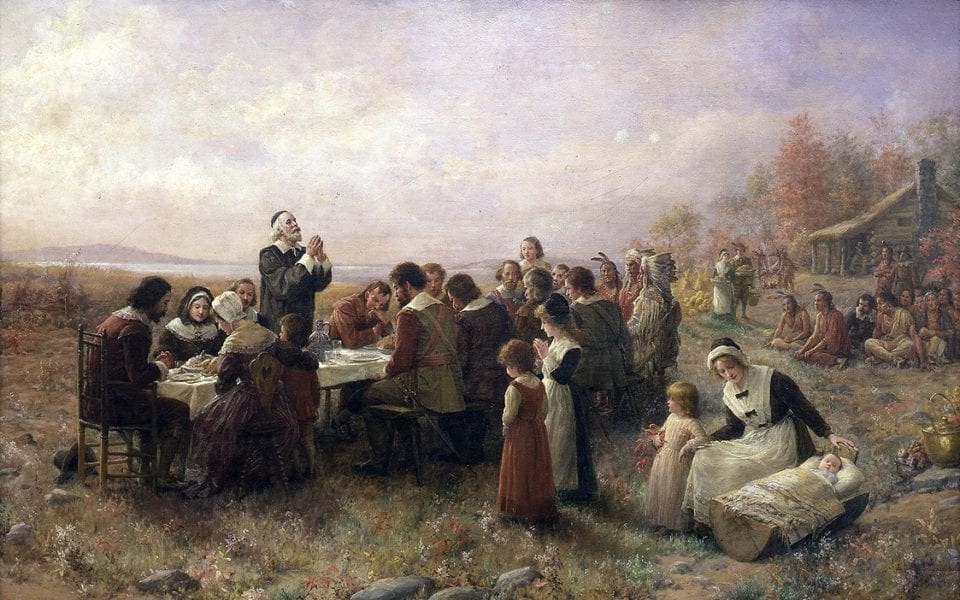
With Black Friday being around the corner, we already know what to expect: ‘40% Off’, streets filled with consumers, ‘60% Off’, some doorbuster drama and ‘80% Off’.
But how did we end up here?
Why is Black Friday ‘black’?
When did it become about sales?
How did shopkeepers and police officers compete unofficially for the name?
And why is it on a Friday anyway?
Why is it a Black Friday?
Black Friday is the day following Thanksgiving, so to answer why Black Friday is on a Friday, we should first explain why Thanksgiving is on a Thursday.
Thanksgiving began as a day of giving thanks for the blessing of the harvest and the preceding year.
However, prayers and ceremonies as a public religious demonstration of piety were not appropriate for a government type of holiday in a country based in part on the separation of church and state – the US. As such, Thomas Jefferson believed that it shouldn’t be a national holiday. Therefore, the celebration date was different from state to state.
Nationalisation of the holiday didn’t come until A. Lincoln’s era, in 1863. Influenced by the 40-year campaigning of author Sarah Josepha Hale, President Lincoln made a proclamation marking Thursday, November 26, 1863, as Thanksgiving. He called upon his countrymen to “set apart and observe the last Thursday of November next, as a day of Thanksgiving and Praise”. In practice, due to the ongoing civil war, the nationalisation was completed in the 1870’s.
Two centuries later in 1939, on the tale-end the of Great Depression, President F.D Roosevelt tried to change that day. Roosevelt was looking for ways to boost the economy. Extending the holiday shopping period, creating more chances for shopping by one week could help.

And so it happened: Thanksgiving was changed from the fourth to the third Thursday in November. Nevertheless, his proclamation proved to be quite unpopular. Two years later, the president and Congress established Thanksgiving as a United States federal holiday to be celebrated on the fourth Thursday in November.
Black ‘Anything’
Unlike in the case of Black Friday, the word ‘black’ before any day is used to describe a highly unpleasant or turbulent event in history. The biggest economic disaster in the 80’s.
Black Monday refers to Monday, October 19, 1987. What started as a stock market crash in Hong Kong, then spread to Europe and hit the US.
Black Tuesday happened on October 29, 1929, during the first days of the Wall Street Crash. Due to panic, selling reached its peak: About 16 million shares were traded that date, an unbreakable record for the next 40 years.
Black Wednesday took place on September 16, 1992. It was when a collapse in the pound sterling forced Britain to withdraw from the European Exchange Rate Mechanism (ERM).
Black Thursday, October 24, 1929, marked the beginning of The Great Depression. It started when the market lost 11 per cent of its value, and the rest is history.
Black Friday, September 24, 1869. 1869. On that day, Jay Gould a railroad developer (and a speculator) and James Fisk, a stockbroker (and a speculator) created a boom-and-bust in gold prices. Prices fell 20 per cent, and the stock market crashed. As a result, commodity prices dropped by 50 per cent.

Black Saturday happened on 7 February 2009 in Australia. A series of bushfires that ignited or were burning across the Australian state of Victoria and up to this day it’s Australia’s all-time worst bushfire disaster.
Black Sunday, well, Black Sabbath.
When Black Friday still meant something bad.
As early as the 19th century, Thanksgiving signalled the start to the holiday shopping season. As marketing was becoming a thing, department stores realised that there are many things they can do to grab the attention of their potential customers. One of these early ‘campaigns’ which became a tradition, was Macy’s parade. 1924 was the year when everything started for the now-popular tradition and strange as it may seem, it was actually a Christmas parade.

As we saw, Black Friday first appeared in the 60’s. The 1860’s. The term was losing its relevance year by year until it pretty much wasn’t used by anyone. About 100 years later though, the term was resurrected to describe a different situation. For the first time, it term was linked to the post-Thanksgiving period. The city of Philadelphia was responsible for this change.
The streets of the city, like the streets of most major cities in the US during this booming period, were transforming into human rivers, as shoppers and visitors flooded the streets the day after Thanksgiving. But Philly had one more thing going on: The Army/Navy football game.

Τhe American college football rivalry game was happening on the Saturday of the same weekend. Apart from business owners, all this mob also meant more business for another particular group of professionals: police officers. Unlike most other people during those festive days, many officers not only couldn’t take the day off – they also had to work overtime to control all this carnage. Therefore, police officers used the term Black Friday and Black Saturday to describe their living hell to describe the post-thanksgiving days.
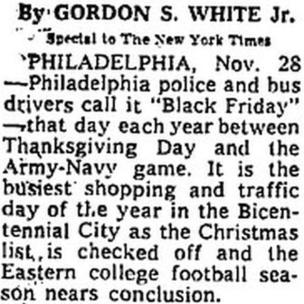
After the police officers linked Black Friday to the chaos in Philadelphia, the shopping craze became more widespread every year with shops attracting huge crowds.
Shopkeepers and merchants of Philadelphia attempted to change the name the days following Thanksgiving and rebrand them as “Big Friday” and “Big Saturday”, which indeed have a more sales-friendly tone.
However, the term Big Friday never really took off. Black Friday still had a negative connotation.
Black Friday = Win
It was not until the 1980’s that the term ‘Black Friday’ was used to describe a fortunate event.
Back when things were less digital, bookkeeping and every other financial record was happening on a piece of paper rather than a PC screen. The negative amounts were shown with a red wink while the positive amounts with black ink.
Retailers traditionally operated at a financial loss for most of the year – January through November. They only began to make a profit at the beginning of the holiday season, which is the day after Thanksgiving. This was when they would no longer be “in the red”; they would put the red pen in the drawer and pull out the black pen. It was profit time, and they were now “in the black”.
In the coming years, the term gained popularity. As the hype around Black Friday grew, so did the crowds. Up to the early 2000’s, the biggest shopping day of the year was the Saturday before Christmas, aka Super Saturday.
Until then, Americans, like most of the rest of the world, loved procrastination more than sales.
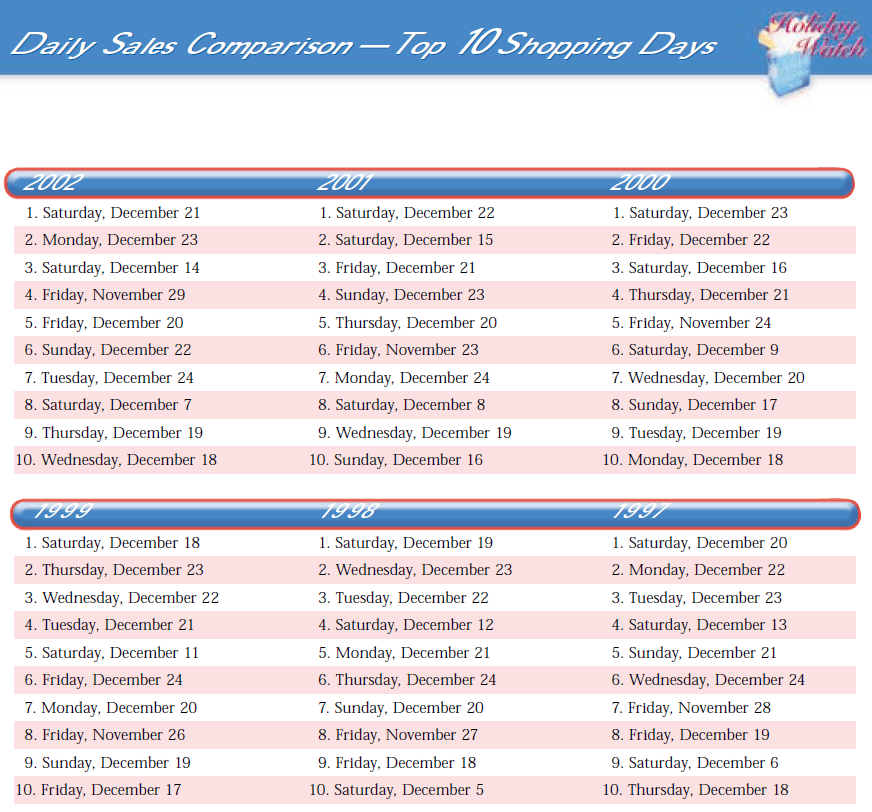
But in the early 2000’s Black Friday took the throne of Super Saturday and became the frenzy we know today.
Black Friday Today – Statistics
It’s time for some numbers – because you like numbers.
Last year, U.S. retailers made a record $7.9 billion in online sales on Black Friday and Thanksgiving, up 17.9 per cent from 2016, according to Reuters.
Online retail has grown 300 per cent between 2000 and 2018, according to the U.S. Commerce Department. During the same period, department store sales have dropped almost 50 per cent.
People prefer shopping digitally, so it comes at no surprise that they also do that on a day when shopping from a physical store is like shopping from Hell.
| Year | Spent per Shopper | Total Spent | Per cent Increase |
| 2002 | N.A. | $416.4 billion | 2.1% |
| 2003 | N.A. | $437.6 billion | 5.1% |
| 2004 | N.A. | $467.2 billion | 6.8% |
| 2005 | $734.69 | $496.2 billion | 6.2% |
| 2006 | $750.70 | $512.6 billion | 3.2% |
| 2007 | $755.13 | $525.9 billion | 2.7% |
| 2008 | $694.19 | $501.7 billion | -4.6% |
| 2009 | $681.83 | $503.2 billion | 0.2% |
| 2010 | $718.98 | $529.4 billion | 5.2% |
| 2011 | $740.57 | $553.8 billion | 4.6% |
| 2012 | $752.24 | $568.7 billion | 2.6% |
| 2013 | $767.24 | $584.1 billion | 2.9% |
| 2014 | $802.45 | $608.0 billion | 5.0% |
| 2015 | $805.65 | $626.1 billion | 3.2% |
| 2016 | $935.58 | $655.8 billion | 3.6% |
| 2017 | $967.13 | $682.0 billion | 4.0% |
Source: thebalance.com
So how much is the actual foot traffic increase on Black Friday from a typical November day? 65%, says the statistics of expendableramblings.com.
According to the same source:
- 174 million is the number of people that shopped in the US on Black Friday weekend in 2017.
- In-store traffic doesn’t really peak early in the morning, but rather at 4 pm.
- The percentage of Black Friday searches that take place before the stores open is 59%
- The percentage of US internet users that would shop digitally at the Thanksgiving table to “Get an amazing deal” is 51%
- Also, Black Friday is responsible for 10 deaths and 111 injuries, according to the Black Friday Death Count.
Black Friday Consumer Habits
Until recently, Black Friday used to refer to Black Friday alone.
It now means more than a single day. Black Friday is only the starting point for the shopping frenzy that peaks on Cyber Monday.
Let’s take a look at what people usually buy on Black Friday, as reported by pwc.co.uk.
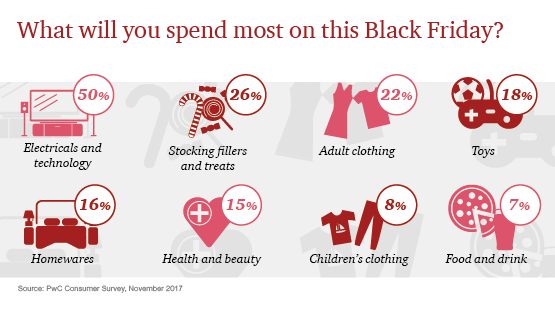
And this is where they buy from on Black Friday.
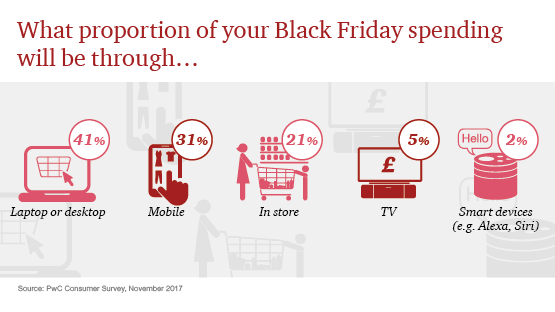
It’s a fact that consumers usually first browse through their potential buys from their phones and proceed to buy from their laptop or desktop.
This is who they buy for:
 Well, you can’t spell ‘Man’ without ‘All the presents are mine’, right?
Well, you can’t spell ‘Man’ without ‘All the presents are mine’, right?
Last but not least, this is why they tend to buy on Black Fridays:
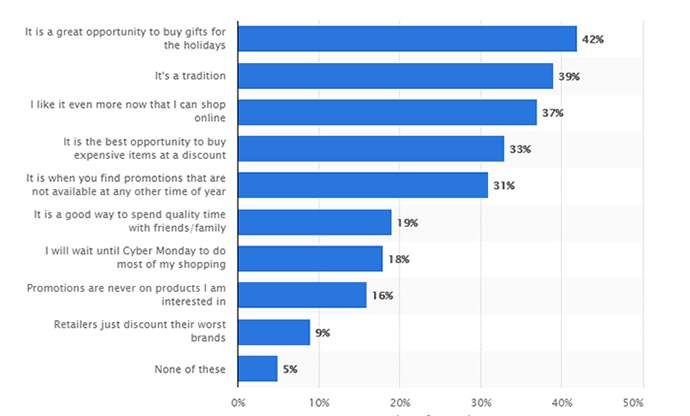
Advice for Black Friday Shopping
Whether you are ready for some serious door busting or you are the click-from-a-sofa kind of buyer, consider this for this year’s Black Friday shopping.
Do your research — Do your research beforehand and don’t go for choices on the spot. Be prepared to shop around to get the best price.
Set a budget — Have a figure in mind you are willing to spend. It can be easy to get carried away if you don’t set a spending limit for yourself, especially with online shopping, where one click can mean one purchase.
Long-term buying — Shopping on Black Friday could save you from last-minute shopping before Xmas. Most of the time, a need for a present will come on the surface just before Xmas. Black Friday shopping can mean more free time during Xmas.
Sign up for email newsletters —Make sure your email is in the lists of brands and shops you are interested in. Most sellers send a Black Friday exclusive email that can give you a heads-up on the deals in advance. Also, this is why email marketing is not dead.
Know your rights — Goods should be of satisfactory quality, fit to do the job intended and be as described. For more about the matter, you can visit the Federal Trade Commission if you are a US citizen or the European Commission Portal for European consumers.
The post The True History of Black Friday: It May Surprise You appeared first on GrowthRocks.